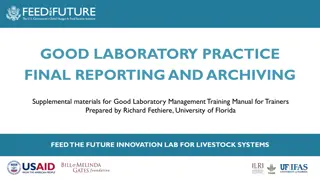
Fascinating Journey of Seeds: From Farming to Germination
Discover the historical significance of seeds, from the origins of farming in ancient Iraq, Iran, and Turkey to their role in providing us with essential crops like wheat and potatoes. Explore the process of germination where seeds sprout and grow into plants, seeking sunlight and nutrients for survival. Witness the magic of phototropism as plants respond to light and warmth, flourishing during spring and summer. Seeds are not just a starting point for plants; they are a vital link in the chain of food production and human sustenance.
Download Presentation

Please find below an Image/Link to download the presentation.
The content on the website is provided AS IS for your information and personal use only. It may not be sold, licensed, or shared on other websites without obtaining consent from the author. If you encounter any issues during the download, it is possible that the publisher has removed the file from their server.
You are allowed to download the files provided on this website for personal or commercial use, subject to the condition that they are used lawfully. All files are the property of their respective owners.
The content on the website is provided AS IS for your information and personal use only. It may not be sold, licensed, or shared on other websites without obtaining consent from the author.
E N D
Presentation Transcript
Seeds Many healthy foods that we eat every day, such as nuts, fruit and vegetables, are grown from seeds.
Seeds Farming began around 12,000 years ago in Iraq, Iran and Turkey when people began to keep seeds from edible plants in order to sow them the following year. Seeds have been valuable throughout history. They were traded by early peoples in exchange for other items, such as cloth.
Seeds Travellers brought seeds back to Europe. Some grew successfully and provided us with crops such as wheat, which originated in Turkey, and potatoes, which originated in Peru and Bolivia.
Seeds Cereal crops such as rice, barley, oats and wheat were developed from the seeds of grasses and are an important part of our diet.
Germination Seeds have a hard outer casing to prevent them from being eaten by rodents and other small animals. Inside the hard outer casing is the embryo. This contains the shoot, roots and leaves. shoot embryo root
Germination If the seed gets the moisture and nourishment it needs from the soil, the plant will start to grow. It will break through the hard outer casing, searching for sunlight. This process is called germination.
Germination When planted in the ground, the seed absorbs water from the soil. This feeds the embryo. A tiny root starts to emerge from the seed. The root grows and presses down into the soil in search of nutrients. The root also helps to anchor the growing plant securely in the soil.
Phototropism A shoot emerges from the seed, growing upwards in search of sunlight. This is called phototropism. Green leaves begin to grow from the shoot. The shoot becomes a stronger stem and the plant grows taller.
Phototropism For the plant to continue to grow well, it must have warmth. Most plant growth occurs in spring and summer when there is more sunshine and the temperature increases.
Diet Food grown from seeds brings a variety of flavours, textures and colours to our diet. Have you ever noticed that we eat different parts of different plants? Seed: peas, wheat, lentils Leaf: lettuce, spinach, cabbage Fruit: strawberry, apple Root: carrot, potato Flower: broccoli, cauliflower
Root vegetables When we eat carrots and potatoes, we are eating the root of the plant. These vegetables are pulled up out of the soil when they are ready for harvest. They are called root vegetables.
Seeds We eat the leaves of lettuce, spinach and cabbage plants. When we eat cauliflower and broccoli, it is the flowers of these plants that we are eating.
Seeds We eat the ripe fruit of strawberry and blackberry plants. We eat the seeds of other plants, for example, peas and beans.
Farming Crops are usually planted in spring. They need good quality soil in order to grow well. The soil should be neither too wet nor too dry, and it should contain lots of air.
Farming Rainfall is essential for a crop to grow. The roots of each plant absorb water and nutrients from the soil. The water and nutrients travel up through the stem to each part of the plant. Just as each part of your body receives nutrients carried by your blood, each part of the plant receives nutrients too.
Farming Most farmers spray their fields with fertiliser, pesticide and herbicide. These contain chemicals that soak into the ground. The chemicals are blamed for polluting our drinking water.
Organic farming Some farmers practise organic farming. Instead of harmful chemicals, they use natural fertilisers such as compost or manure to increase the nutrients in the soil and improve their crops. Only natural pesticides such as paraffin oil, gelatine and plant oils are used.
Organic farming Organic farmers also practise crop rotation. This means that they plant different crops from year to year to prevent the soil from getting depleted of certain nutrients. Organic farming practices help to improve the quality of the soil and are said to produce tastier, more nutritious crops.
Illustrations Shutterstock Beehive


![READ⚡[PDF]✔ Yup I'm Dead...Now What? The Deluxe Edition: A Guide to My Life Info](/thumb/20463/read-pdf-yup-i-m-dead-now-what-the-deluxe-edition-a-guide-to-my-life-info.jpg)

















